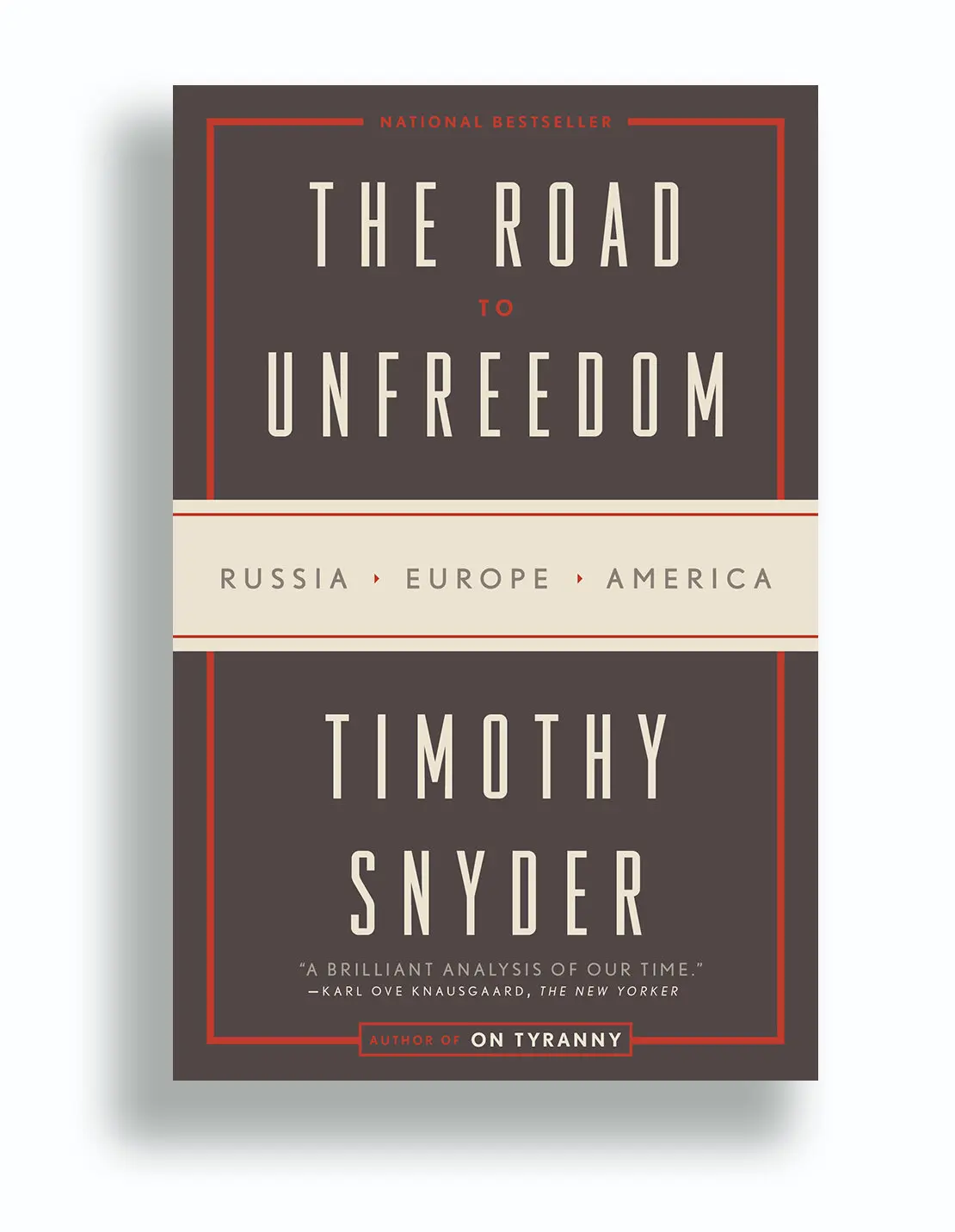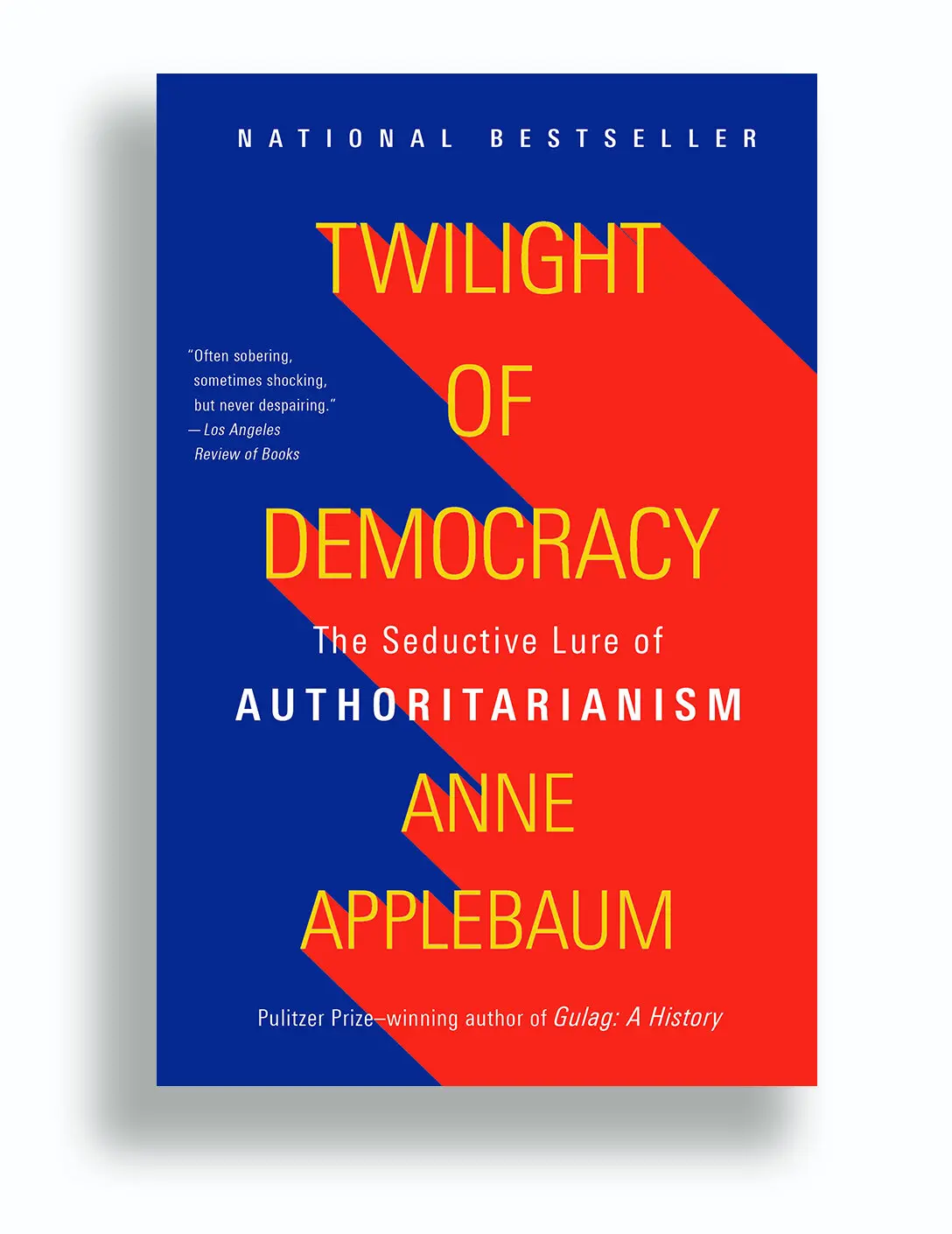It Can Happen Here: 8 Great Books to Read About the Decline of Democracy
It’s among the world’s oldest forms of government, but it’s increasingly under threat. These books consider the sources and effects of an alarming global trend.
Published Nov. 2, 202212:52 p.m. ET
At the same time — and, of course, because of it — there has been a miniboom in books about the decline of democracy. These range from works that diagnose the causes of democratic unraveling or seek to put it in historical context to those that forecast the grim consequences. Despite different points of view, these books all have a few core ideas in common: that democracies are fragile; that democratic norms are necessary but crumbling; that authoritarianism is seductive; that while America is one of the world’s oldest surviving democracies, it is not immune to the forces that have abraded our form of government elsewhere.
Here’s a smart starter set of books about how and why democracies deteriorate and how vulnerable we are.
How Democracies Die, by Steven Levitsky and Daniel Ziblatt Crown, 2018
Rightly acknowledged as the modern progenitor of the genre, Levitsky and Ziblatt’s book remains powerful and original four years after it was published. Since the end of the Cold War, the authors point out, most democracies that have perished have done so not at the end of a gun, but at the ballot box. Countries democratically elect autocrats who then erode democracy. Today, democracies do not die in darkness, but under TV klieg lights and on social media. A main culprit, they suggest, is “extreme partisan polarization.” Especially if the divide is along ethnic lines.
The authors offer a useful set of warning signs of a would-be elected autocrat: a weak commitment to democratic laws, the denial of opponents’ legitimacy, the condoning of violence and the willingness to suspend civil liberties. Former President Trump, the authors say, checks all these boxes. Another telltale sign is something else we saw during the Trump presidency: the erosion of democratic norms. Constitutional checks and balances offer little protection if we fail to observe them. “Norms of toleration and restraint,” Levitsky and Ziblatt write, “served as the soft guardrails of American democracy.” Those guardrails have been battered.
The Road to Unfreedom: Russia, Europe, America, by Timothy Snyder Tim Duggan Books, 2018
Twilight of Democracy: The Seductive Lure of Authoritarianism, by Anne Applebaum Doubleday, 2020
These beautifully written and personal books each zero in on the 2010 plane crash of Poland's president on his way to visit a memorial for Polish soldiers executed by Russian forces in World War II. The crash, Snyder writes, “united society for a day and then polarized it for years.” Both Snyder and Applebaum see that event as an inflection point that ushered in an era of authoritarianism in Europe, and eventually America. In each case, democratic decline was fueled by a rash of conspiracy theories, racial nostalgia and perceptions of victimhood. The authors view Trump as a symptom — a particularly noxious one — and not a cause of what has become a global phenomenon.
Snyder posits a clash between a politics of inevitability — a belief that progress is predestined — and a politics of eternity, based on ethnicity, myth and permanent grievance. Applebaum mirrors this thesis by drawing a distinction between “reflective” nostalgia — a healthy respect for the past — and “restorative” nostalgia, which she defines as an attempt to undemocratically impose on a nation a mythic past that never really existed. In America, we see this development in the adoption by one national party of a platform fueled by chronic complaint, status anxiety and a yearning for an undemocratic past.
Both authors describe the appeal of authoritarian leaders who use conspiracy theories to make complex phenomena sound simple and their followers feel special. Trump, Applebaum writes, exploited voters who saw democracy as producing a culture “where victims are more celebrated than heroes.” Snyder regards Trump as a kind of junior varsity Putin, an embodiment of cartoonish masculinity railing against wimpy democracy. America is not exceptional, these authors argue: Given the right conditions, any society can turn against democracy and, sadly, many are doing so now.
How Fascism Works: The Politics of Us and Them, by Jason Stanley Random House, 2018
Strongmen: Mussolini to the Present, by Ruth Ben-Ghiat Norton, 2020The use of the F-word in American politics was once rare, reserved for extremist organizations like the Ku Klux Klan and the John Birch Society. It has now been normalized, with even President Biden describing the Republican “MAGA philosophy” as “semi-fascism.” These two books place the modern version of fascism in the context of its rise in the 1920s and ’30s. While anti-democratic ultranationalism — one definition of fascism — looks different today, it employs many of the rhetorical tropes of traditional fascist politics: racial purity, anti-intellectualism, invocation of a mythic past and appeals to blood and soil.
The invocation of the past is politically strategic. “It is never the actual past that is fetishized,” Stanley writes. He notes that monuments to the Confederacy were erected long after the Civil War ended in part as propaganda to whitewash the horrors of slavery. Fascists, both authors suggest, want to destabilize the shared sense of reality that is necessary for democratic dialogue. They seek to create what one might call an air of QAnon-like unreality, in which elected officials and government institutions are targets of bizarre claims — including, for instance, that they are covers for child sex-trafficking rings.
The classic debate between liberty and equality is distorted by fascists, who see equality as a denial of a natural law whereby some people are inherently more deserving of power than others. For fascists, democracy makes unequal people equal, and tries to equate “them” with “us.” Fascist rhetoric is designed to divide citizens into two distinct classes: the sons and daughters of the soil, who are the true citizens of the nation, and the “other” — the foreign, the rabble, the lawless.
How Civil Wars Start: And How to Stop Them, by Barbara F. Walter Crown, 2022
The Next Civil War: Dispatches From the American Future, by Stephen Marche Avid Reader Press, 2022A new subgenre of books about democracy’s decline features those that envision a scenario we’d rather not see: civil war. When it comes to that, both Walter and Marche posit what Walter calls a “failure of the imagination” by Americans, a sense that it couldn’t happen here. In part, this is the legacy of historical memory, of our 19th-century Civil War, with its vast battlefields of blue and gray. Nothing of that scale is on the current horizon. But modern civil wars start not with troops in uniforms but with vigilante actions, illegal militias and events like Jan. 6. Both authors suggest that civil wars have no single cause, and citizens invariably don’t realize that their country is on a path to one until it is too late.
Walter, a professor at the University of California at San Diego, notes that civil war is in fact foreseeable and rooted in specific conditions. “Civil wars ignite and escalate in ways that are predictable,” she writes. “They follow a script.” Her book is data-driven, while the book by Marche, a Canadian journalist, sometimes resorts to the tropes of apocalyptic fan fiction. But both agree that we are experiencing prime conditions for civil war: ethnic factionalism, an aggrieved class of citizens and a demagogic former leader who is threatening to run for re-election. Walter argues that the trigger for civil war often comes from a dominant ethnic group that believes the country is “theirs” and that the group’s members have been unfairly “downgraded.” “In the 21st century, the most dangerous factions are once dominant groups facing decline,” she writes. It’s not the destitute or the downtrodden who start civil wars today, but the once privileged who want to take their country back. As Marche says, “tribalism is no longer a mere metaphor.”
The Great Experiment: Why Diverse Democracies Fall Apart and How They Can Endure, by Yascha Mounk Penguin Press, 2022Progressive politicians like to say that diversity is our strength, but Mounk’s book explores an uncomfortable truth: There is little precedent for the success of a large, diverse democracy. Throughout history, democracies from Athens to Rome to Geneva were ethnically homogeneous and relatively small. The great experiment of Mounk’s title is whether a modern heterogeneous democracy like ours can survive. That’s what the framers worried about too.
It’s important to remember that our political diversity is a recent phenomenon. For most of our history, people of color were not entitled to receive the full benefits of democracy. The democratic experiment with diversity is not just occurring here. With giant waves of immigrants arriving in Europe, democracies across the Atlantic are also under threat from right-wing groups seeking to restore ethnic purity and exclude “foreigners.” At the same time, the very openness and hurly-burly of democracy — supercharged by social media — doesn’t always serve diversity. “Democratic institutions,” Mounk writes, “can do as much to exacerbate as to alleviate the challenge of diversity.”
So, can the many become one? And should this be the goal of a modern democracy? Mounk rejects the metaphor of the melting pot as too idealistic, and that of the salad bowl as too fragmented. The hoped-for future he envisions is more like a beautiful and vibrant public park that everyone can enjoy separately or together.
The potential end of our democracy is an urgent matter.
It has become cliché in publishing that no matter how pessimistic your book title, you have to add a clause to the subtitle along the lines of: “and what we can do about it.” The problem in this case is that what we can do about democratic decline is not very clear; the diagnosis has been much more extensively analyzed than the potential cures. All the books on this list call for less inequality, more fairness, less social media, more facts. Easier said than done.
But the potential end of our democracy is an urgent matter. Remember, modern democracies vote themselves out of existence, and the midterms are around the corner. Though the authors of these books have different views of our current political situation, they would probably agree on this: If you have one party in a two-party democracy that does not accept election results, you don’t really have a democracy anymore. The question is no longer: Can it happen here? (The answer to that is yes.) The question is now: Will it happen here?











Comments
Post a Comment